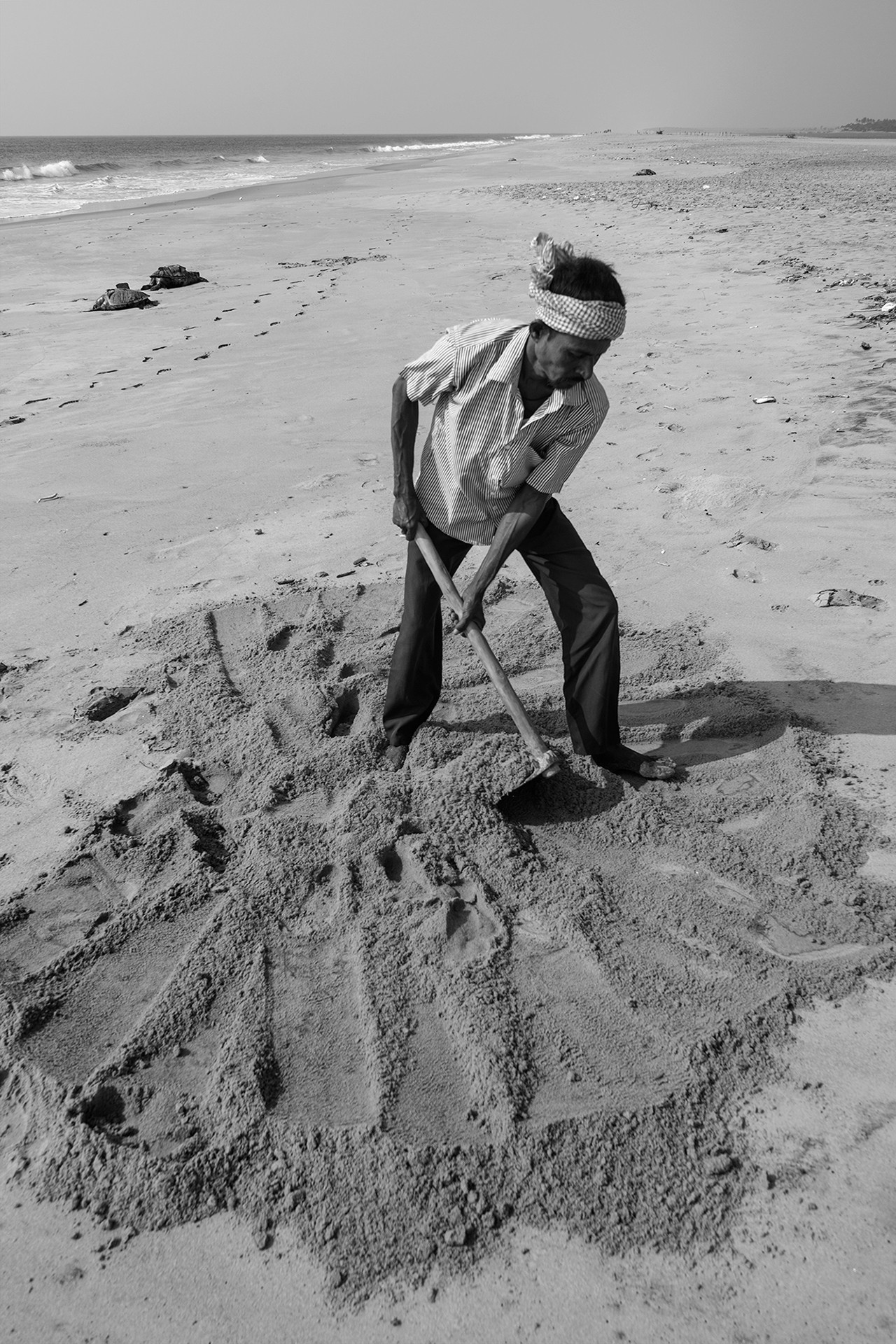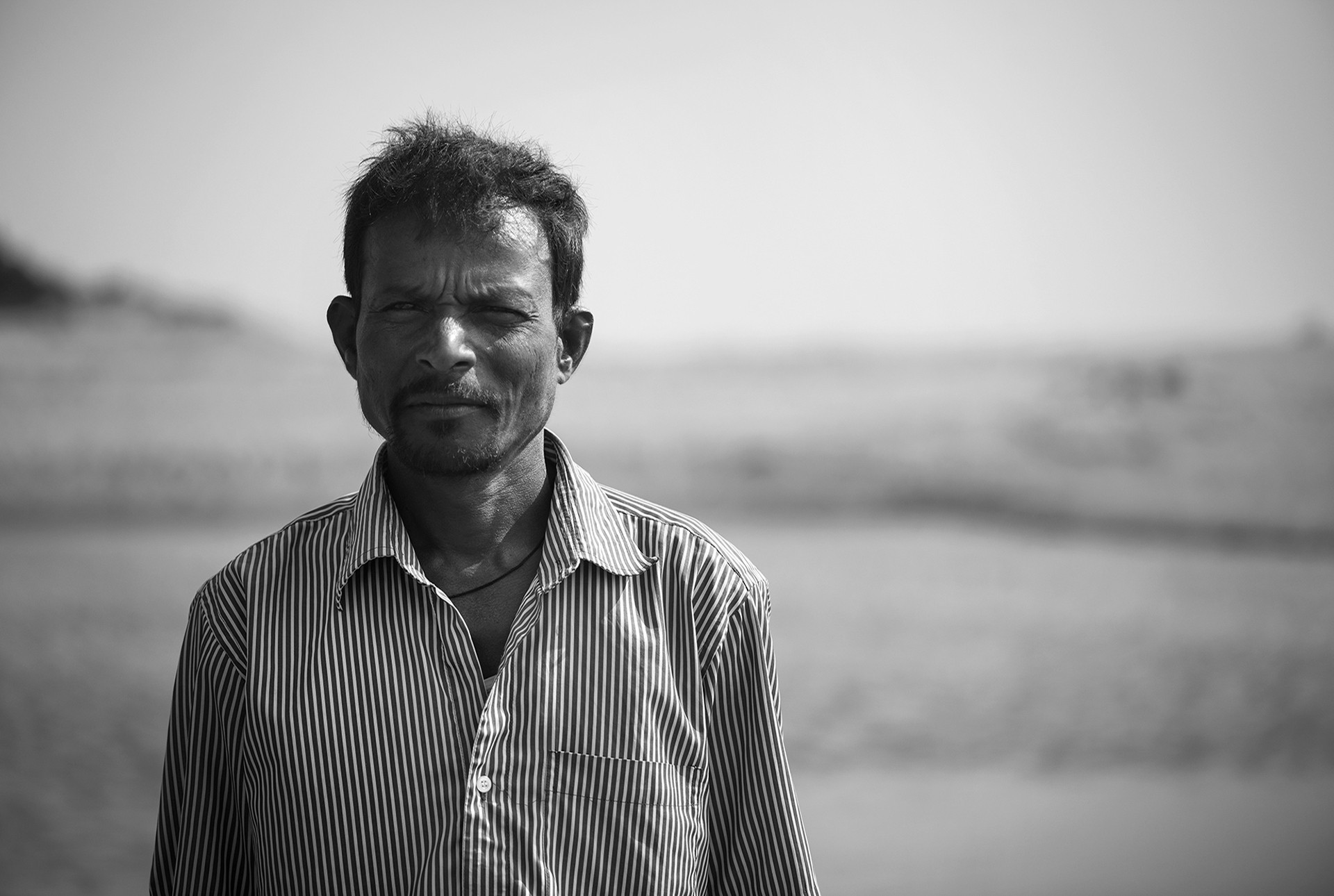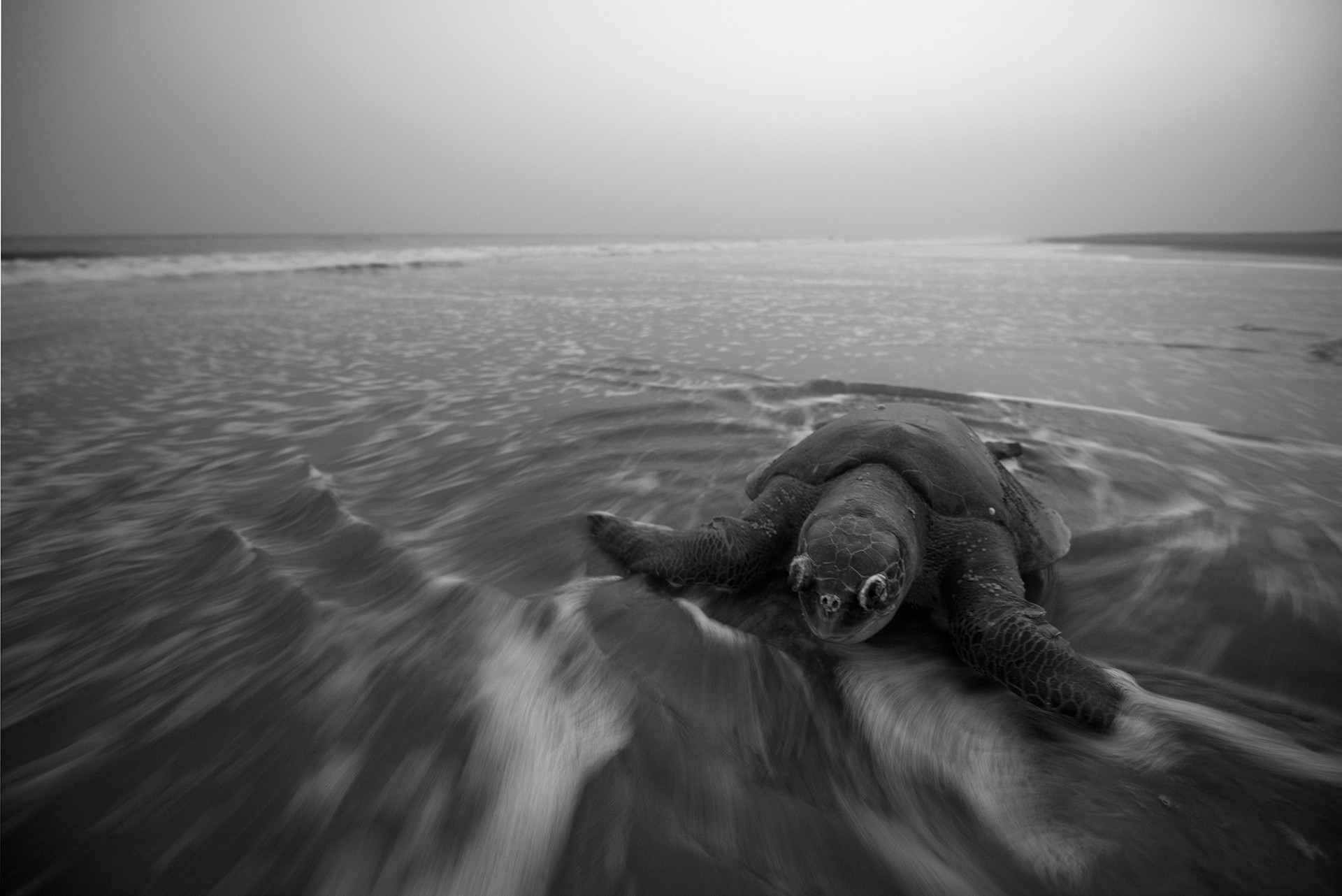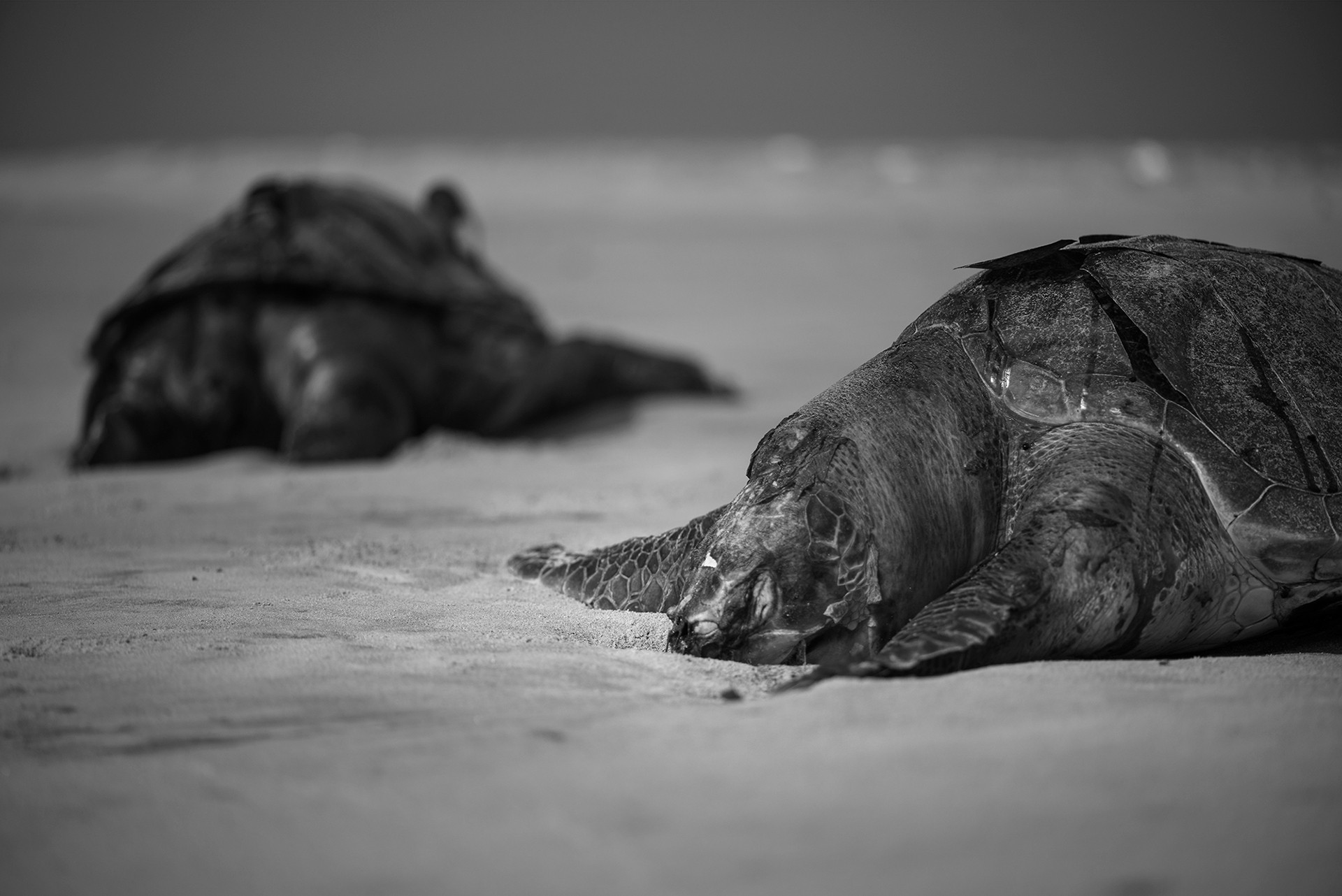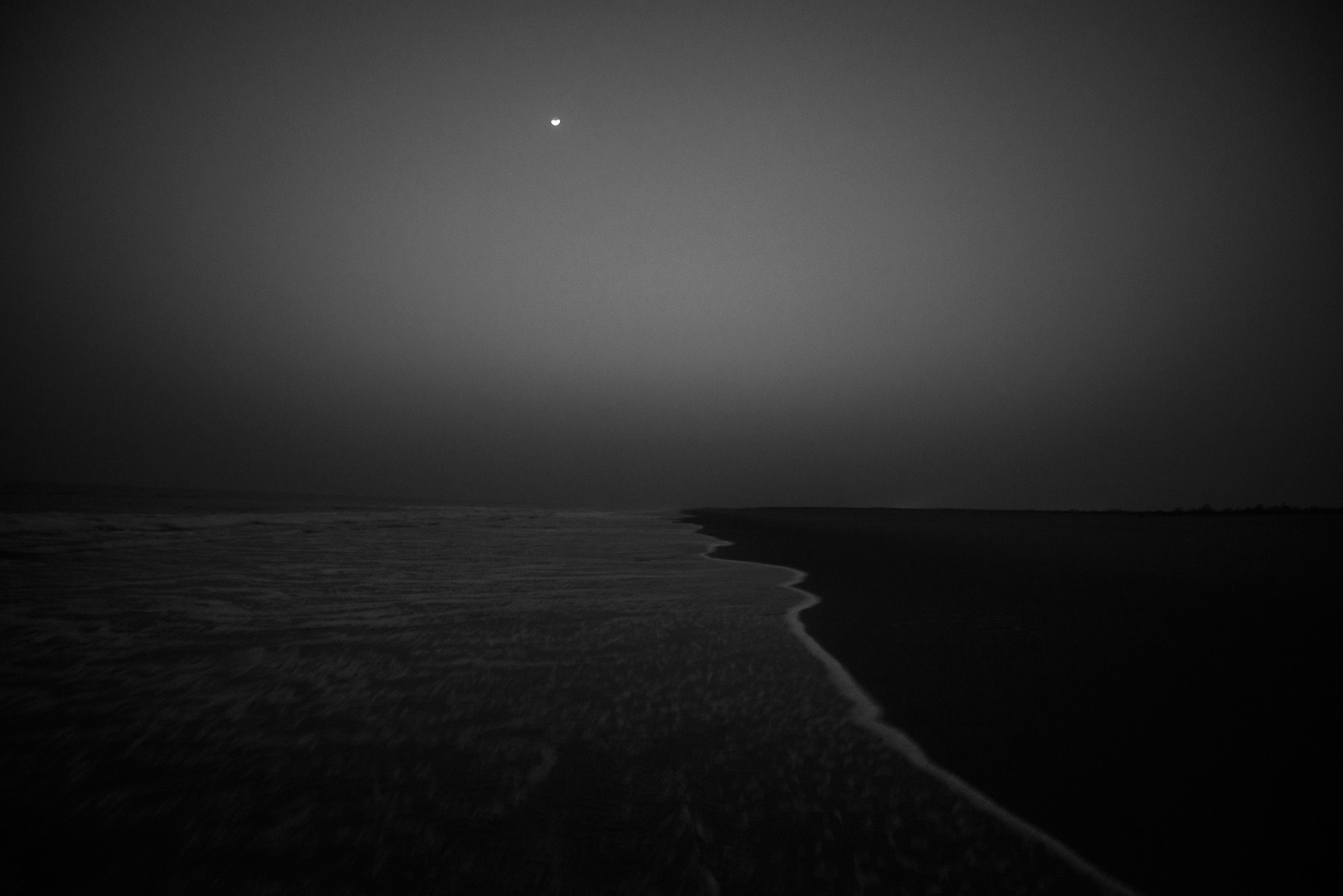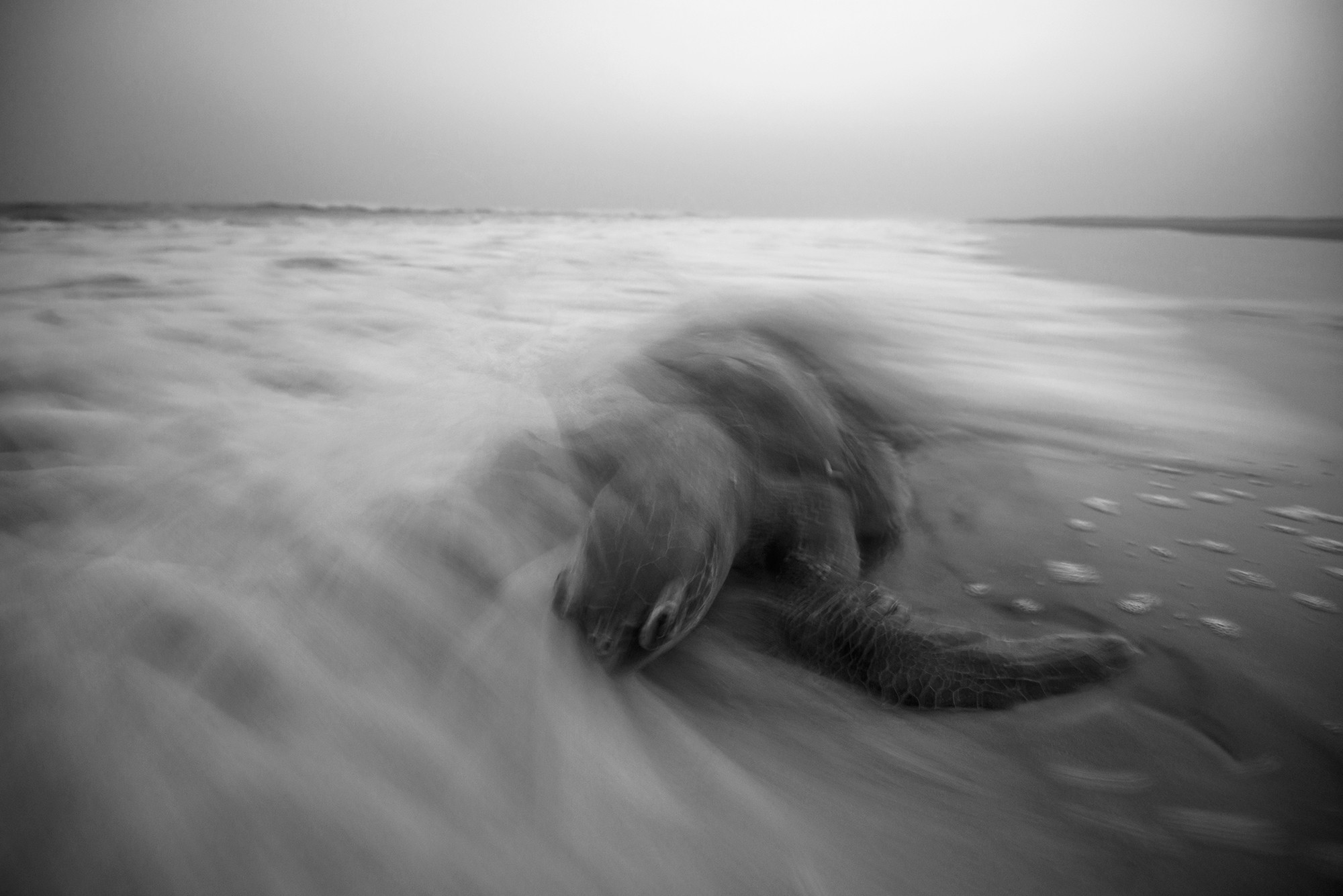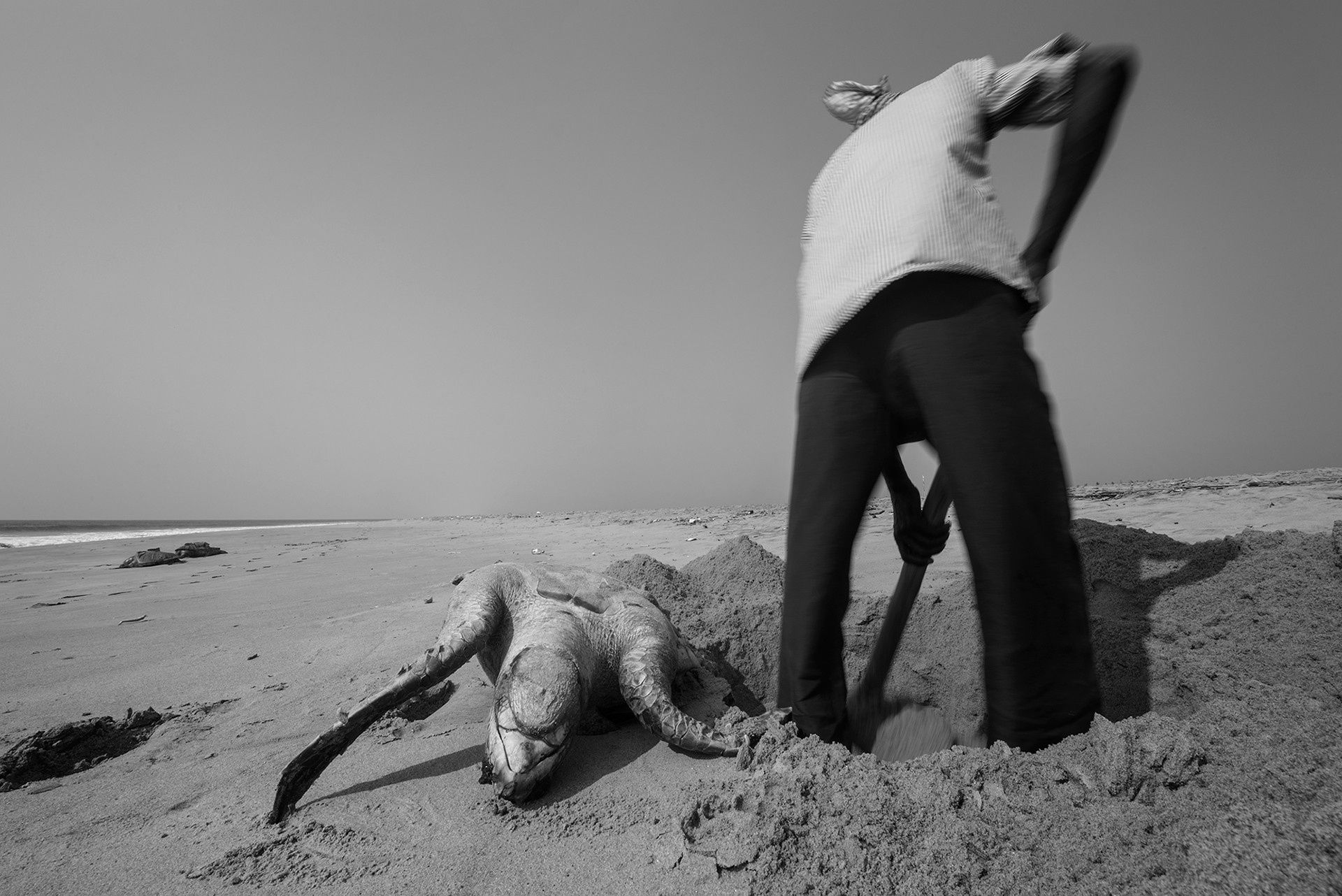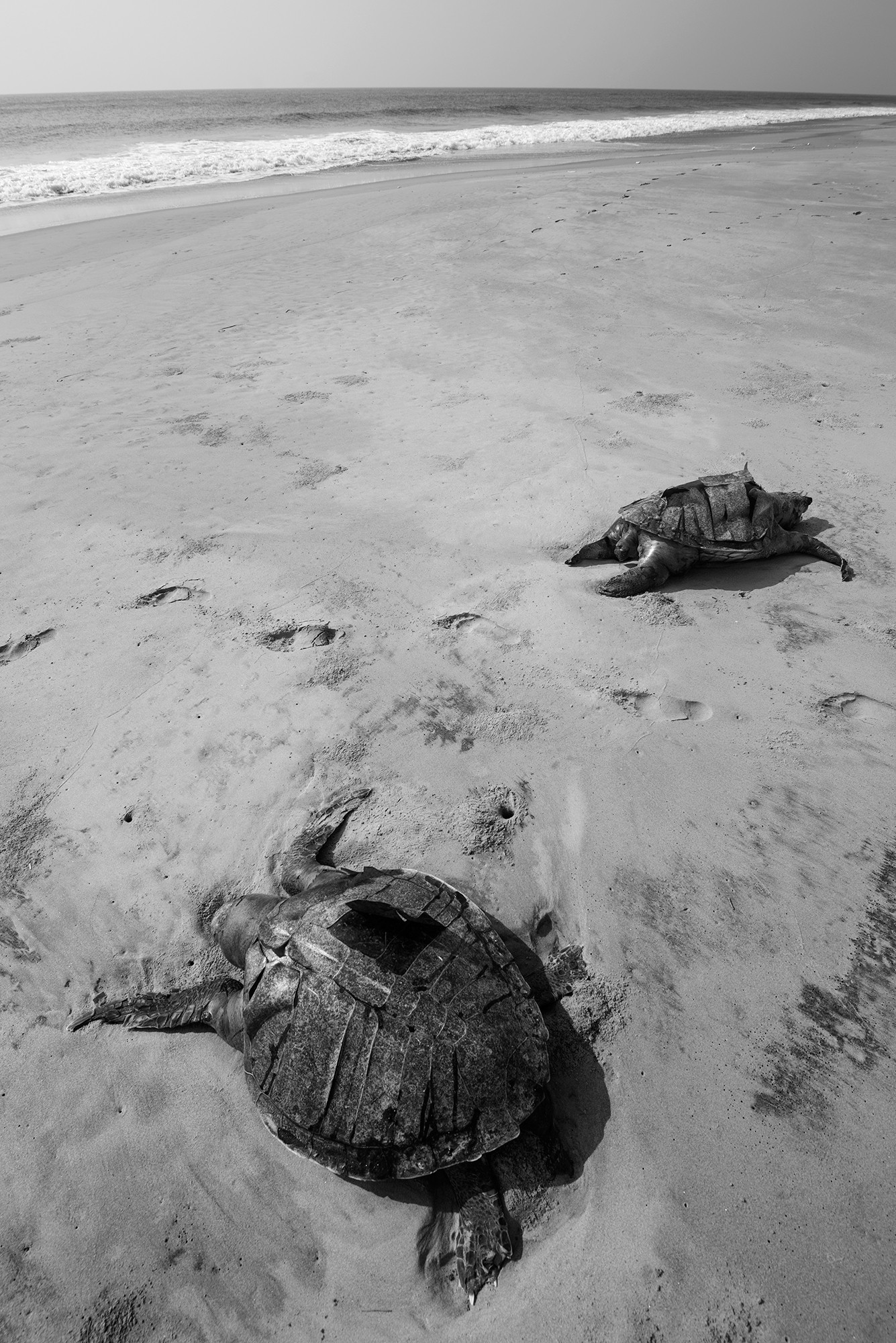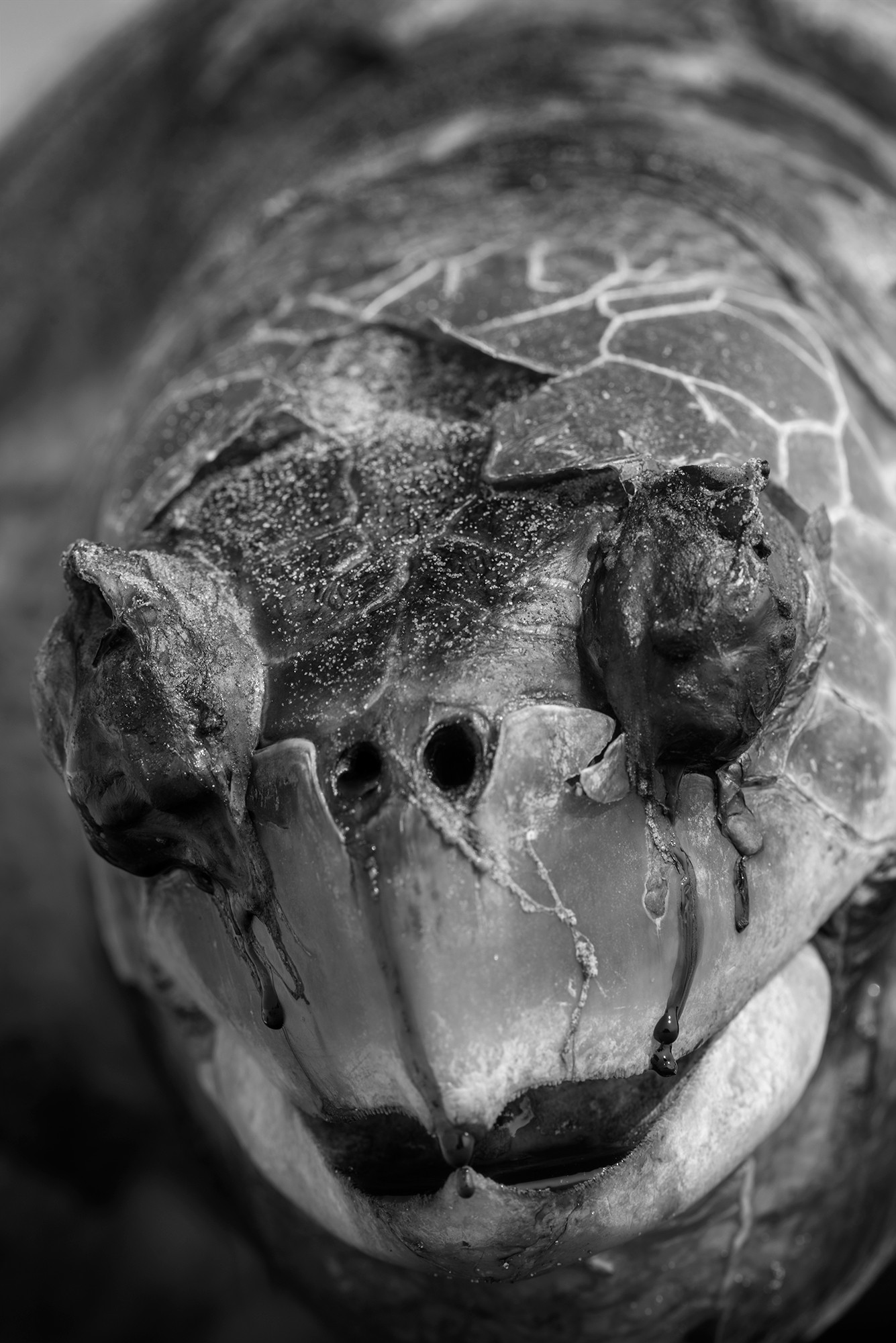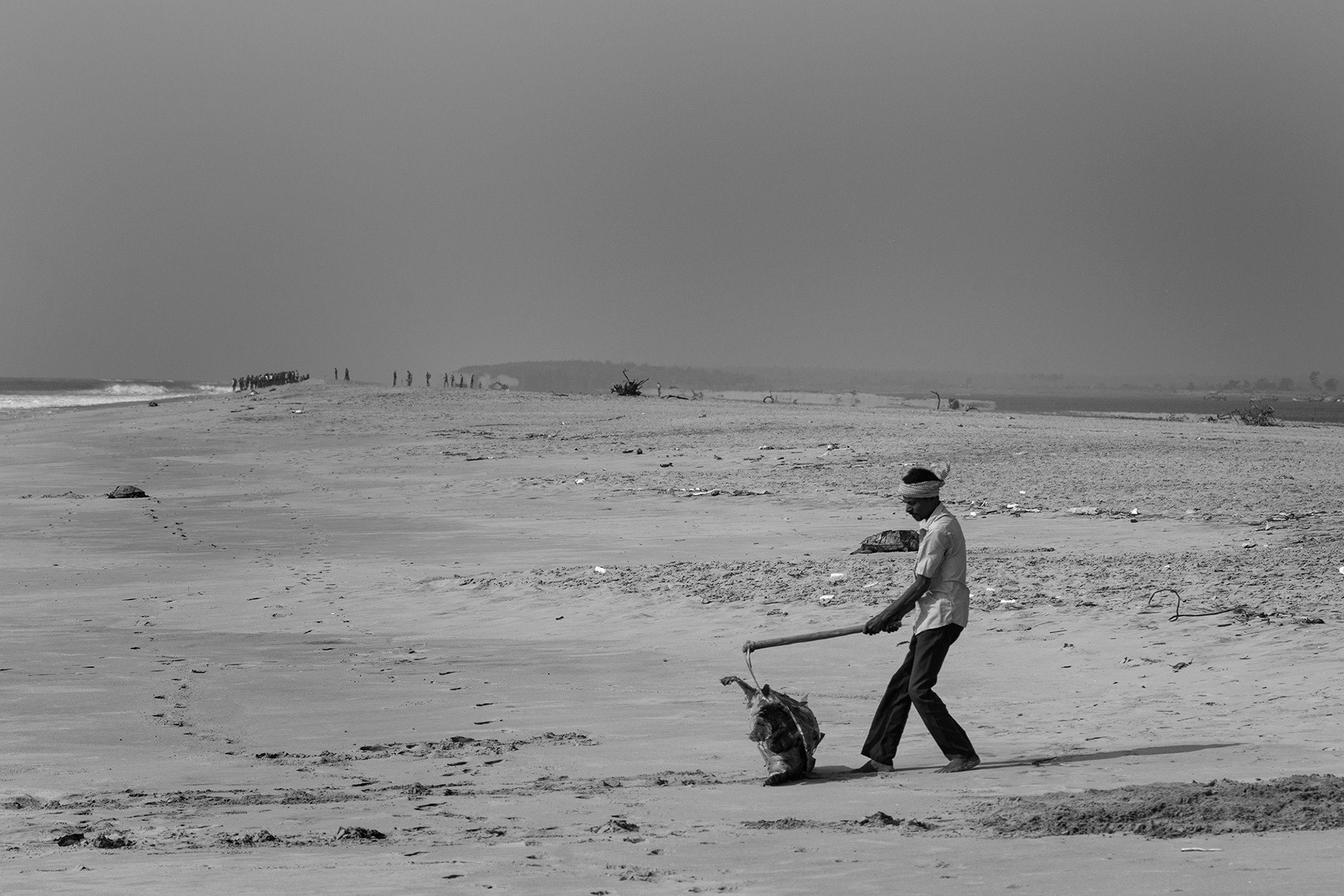Every morning, from November to March, Kulmohan Sahu wakes up at 5.30. By 6 o’clock he is out on the beach, armed with a shovel. This is not just any beach. This is the famous Chandrabhaga stretch lying between Puri and Konark in Odisha – a beach that is visited by a number of foreign and Indian tourists. For these five months, Sahu is employed by the Forest Department to patrol this stretch and keep the beach clean. But it is not trash he is instructed to get rid of. It is turtles.
Odisha has the distinction of hosting the largest Olive Ridley turtle rookery, or nesting colony, on the planet. Every year, hundreds of thousands of these turtles find their way back to this coastline. Mating takes place offshore and in the months of January and February, female Olive Ridleys come ashore en masse to lay their eggs in the sand. But Sahu is not concerned with these turtles. In fact, he doesn’t encounter them during his daylight working hours. The nesting females prefer to come and go under cover of darkness, and this is not their preferred nesting ground anyway. Sahu is here for the dead ones: carcasses that wash up on shore with the incoming tide and then lie rotting in the sun.
Most of the Olive Ridley nesting in Odisha happens around Gahirmatha and Rushikulya, much farther up and down the coast from Chandrabhaga. But the ocean knows no boundaries, nor delineations of preference. Offshore, these waters belong to animals and humans alike, and it is here that many of these reptile mariners meet their untimely demise. The ocean simply carries them ashore.
Mechanised fishing trawlers increasingly harvest the waters off Odisha. Over the years, as the number of boats has increased, so too have the mortality rates of the Olive Ridleys. Collisions with fishing vessels and entrapment and drowning in fishing nets are cited as the leading causes of their deaths. Recently, postmortems have shown that some of these animals even suffer from decompression sickness – a result of being trapped in nets and getting pulled up from deep water too quickly.
Another major cause of disturbance to nesting females and their hatchlings is the increase in the number of artificial lights along the coastline. Females coming ashore to nest tend to do so in the dark of night. They are often disoriented by artificial light. Their hatchlings are even more sensitive. In the wild, upon hatching and emerging from their nests in the sand, hatchlings will make a beeline for the ocean, guided by its relative brightness against a dark night sky. The construction of military facilities, ports and highways in the area exacerbate these problems. Hatchlings are often found heading inland, towards these man-made lights. In the process, they die of dehydration and exhaustion or become roadkill. The growth of aquaculture farming and chemical industry in these areas adds to the light pollution and to the chemical contaminants in the water.
And lastly, even seemingly benign Casuarina plantations – planted in the ’70s as a storm barrier – have rendered some of the nesting beaches unsuitable. Olive Ridleys, like many other marine turtles, prefer open stretches of sandy beach without any vegetation.
It is easy to see that the conflict between the conservation of Olive Ridley turtles, economic and industrial development, and the livelihood of fishermen in these parts of Odisha is rife with complexities.
Some argue that there are just too many people and too many boats for the area. The seven-month fishing ban imposed between November 1 and May 31 requires trawlers to fish beyond a 20km distance from the coastline. But while fishing bans and no-take zones are enforced on paper, illegal near-shore trawling and gillnetting are still very much a reality. And the use of turtle excluder devices (TEDs) in fishing nets is not yet mandatory, despite continued efforts by scientists and conservationists in the area.
On the flip side, many of the fishermen affected by the ban see the onshore and offshore development of these areas as a hypocritical mixed signal. The construction of ports and the approval of offshore oil exploration in the last few years – often, without the required environmental impact assessments – have raised many eyebrows among locals and conservationists alike. The long-term effects of this sort of development on the Olive Ridley arribadas (synchronised, large-scale nesting activities) remain to be seen.
But all of this seems tangential to Kulmohan Sahu and his undertaking. He appears resigned to his task, unquestioning. I watch as he rolls a carcass up to the top of the high tide line. Sometimes the ocean does this work for him, depositing turtle bodies all the way up to the top of the beach – the ideal place for them to be buried, in dry sand away from the incessant lapping of the water. As he begins to dig he shares some of his thoughts. “It is not a good sight for the tourists. They come here to enjoy the beach and don’t want to see or smell all of this,” he says. “Sometimes I have to chase away the stray dogs that are eating them.”
I walk with him to the darker dots lying farther along on the warm sand. There are two carcasses lying next to each other. In this late morning heat a macabre change is already underway. As these turtles rot, gases build up within them. Blood and other fluids ooze out of their nostrils. The segmented plates on their shells, or scutes, have become brittle in the salty sunshine, cracking and separating from the shell below. Their eyes swell to an unnatural size and leak tears of blood. My eye is to my camera but my mind is elsewhere, envisioning these amazing creatures alive in their element.
“Some days I bury two turtles, some days I bury 22. It is hard to say how many I will find,” Sahu says, snapping me back to the moment. “I earn ₹150 a day in these months. I don’t mind it. I spend time by myself and walk along this beach. Sometimes it gets very hot, but I am used to it.”
I watch as he covers this most recent of graves. A radiating circle of disturbed sand is the only sign of the part that this individual played in the incredible arribada that happens here every year. The wind will smooth the sand down soon enough, and the turtles will become a part of the beach. I look at Sahu, but cannot register any particular emotion or feeling in his expression. And I am hesitant to project my own sentiments upon his seemingly straightforward, and necessary, daily routine. He saves me the awkwardness. “I am thirsty,” he says. “Can I have some water?”
